How to Automate Microsoft Word by Inserting and Updating Fields
by Avantix Learning Team | Updated March 14, 2021
Applies to: Microsoft® Word® 2010, 2013, 2016, 2019, 2021 or 365 (Windows)
You can create dynamic components in your Word documents by inserting and updating fields. When you use built-in commands and features, many Word fields are inserted automatically. For example, if you insert a dynamic date or page numbering, Word inserts fields in your document. Essentially, fields are variables that are inserted using field codes. Update your fields and your document updates automatically!
You normally see the result of a field or variable rather than the codes but you can display field codes. In this article, we’ll discuss inserting and updating fields but, as you get more comfortable with fields, you can edit the field codes directly and even apply different types of formatting using switches.
Note: If you are working with fields in Microsoft Word, you will be using quite a few function keys (such as F9). On some laptops, you will need to press the Fn key on your keyboard to enable your function keys. For example, instead of pressing F9, you would press Fn + F9.
Recommended article: 21 Microsoft Word Formatting Shortcuts for Faster Formatting
Do you want to learn more about Microsoft Word? Check out our virtual classroom or live classroom Word courses >
Where is the Insert Field command?
The Insert Field command is hidden in the Ribbon so it’s a bit difficult to find.
To access it, you’ll need to click the Quick Parts button on the Insert tab. The Field command appears in the drop-down menu as follows:
The Field dialog box appears as follows in Microsoft Word:
Insert a field using the Field dialog box
To insert a field using the Field dialog box:
- Navigate to the location in the Word document where you want to insert a field.
- Click the Insert tab in the Ribbon.
- Click Quick Parts. A drop-down menu appears.
- Select Field. A dialog box appears.
- In the list of Field names, select a field. You can filter the list by clicking the down arrow in the Categories list and selecting a category first.
- Under Field properties, select any properties or options you want.
- To see the codes for a particular field in the Field box, click Field Codes. For some fields, this button is clicked by default.
- Ensure that Preserve Formatting During Updates is checked so that formatting you apply is not removed when the fields are updated.
- Click OK. The field is inserted into the document.
- Format the field results by applying text formatting to the field using the Home tab in the Ribbon.
View or hide field codes
You can view or hide field codes in your document by pressing Alt + F9. Field codes appear between braces or curly brackets { }.
When you view field codes in your document, fields appear as follows:
{ FIELD NAME Properties Optional switches }
- FIELD NAME is the name that appears in the list of field names in the Field dialog box.
- Properties are any instructions or parameters that are used in a particular field. Not all fields have properties or parameters and, in some fields, parameters are required.
- Optional switches are any optional settings that are available for some fields. Switches are another way of formatting specific fields.
You cannot insert a field by typing field code braces or curly brackets on your keyboard. To insert field code braces, press Ctrl + F9 to insert the braces and then you can type the remainder of the field using the correct syntax.
Edit a field in the Field dialog box
To edit a field in the Field dialog box:
- Right-click the field and then click Edit Field. A dialog box appears.
- Change the field properties and options.
- Click OK.
For some fields, you must display the field code first to edit the field. To display all the field codes in the document, press Alt + F9. Be sure to hide the field codes later by pressing Alt + F9 again.
Some fields are edited in their own dialog boxes instead of in the Field dialog box. For example, if you right-click a hyperlink and then click Edit Hyperlink, the Edit Hyperlink dialog box appears.
Highlight fields with grey shading
Fields can also be highlighted with grey shading to make them more visible in the document. Normally, when you click in a field, it appears with grey shading.
To change the shading settings for fields:
- Click the File tab in the Ribbon.
- Click Options. A dialog box appears.
- Click Advanced in the categories on the left.
- Under Show document content, in the Field shading list, select Always, Never or When selected (the default setting).
- Click OK.
Below is the Options dialog box:
Update fields
By default, Word should automatically update fields when a document is opened. Many fields are also updated automatically when you go to Print Preview (click the File tab and then click Print). If you prefer, you can update fields manually.
To update a field manually, right-click the field and then click Update Field or press F9.
To update all fields manually in the main body of a document, press Ctrl + A to select all and then press F9.
Some fields in headers, footers or text boxes must be updated separately. Click in the header, footer or text box, press Ctrl + A to select all and then press F9. Page fields (which display page numbering) do not need to be updated manually (they update when you go the Print Preview).
Lock fields
You can also lock fields to prevent automatic updating of the field. To lock a field so that field results are not updated, click the field, and then press Ctrl + F11.
To unlock a field so that field results can be updated, click the field, and then press Ctrl + Shift + F11.
Subscribe to get more articles like this one
Did you find this article helpful? If you would like to receive new articles, JOIN our email list.
More resources
How to Insert a Line in Word (3+ Ways)
Microsoft Teams Keyboard Shortcuts (40+ Shortcuts)
How to Keep Text Together in Microsoft Word (Paragraphs, Lines or Words)
How to Create a Table of Contents in Word (Insert, Format and Update a TOC)
10+ Great Microsoft Word Navigation Shortcuts to Move Around Quickly in Your Documents
Related Courses
Microsoft Word: Intermediate / Advanced
Microsoft Word: Designing Dynamic Word Documents Using Fields
Microsoft Word: Long Documents Master Class
Microsoft Word: Accessible Word Documents
Microsoft PowerPoint: Intermediate / Advanced
VIEW MORE COURSES >
Our instructor-led courses are delivered in virtual classroom format or at our downtown Toronto location at 18 King Street East, Suite 1400, Toronto, Ontario, Canada (some in-person classroom courses may also be delivered at an alternate downtown Toronto location). Contact us at info@avantixlearning.ca if you’d like to arrange custom instructor-led virtual classroom or onsite training on a date that’s convenient for you.
Copyright 2023 Avantix® Learning
Microsoft, the Microsoft logo, Microsoft Office and related Microsoft applications and logos are registered trademarks of Microsoft Corporation in Canada, US and other countries. All other trademarks are the property of the registered owners.
Avantix Learning |18 King Street East, Suite 1400, Toronto, Ontario, Canada M5C 1C4 | Contact us at info@avantixlearning.ca
on
September 8, 2021, 8:17 AM PDT
3 ways to enter fields in Microsoft Word
Microsoft Word fields house instructions that help you create dynamic content; they’re flexible and powerful, if you know how to use them.
We may be compensated by vendors who appear on this page through methods such as affiliate links or sponsored partnerships. This may influence how and where their products appear on our site, but vendors cannot pay to influence the content of our reviews. For more info, visit our Terms of Use page.

Occasionally, a requirement simply can’t be easily met with the built-in features. Microsoft Word fields are similar to little bits of code that have a specific job. They return values that you can’t easily do in Word any other way. Fortunately, they’re easy to use once you get the hang of entering them properly. In this article, I’ll show you three ways to enter a Word field:
- Use the interface
- Ctrl + F9
- Type and convert
I’m using Microsoft 365 on a Windows 10 64-bit system, but you can use earlier versions. Word fields aren’t supported by Word Online; the original values will display, but they won’t update, nor can you enter them.
SEE: 83 Excel tips every user should master (TechRepublic)
About Word fields
You can insert fields to display content that will change when you update those fields. You might not realize it, but you’re already using fields. Page numbers, merge fields and so on are inserted automatically when you use those features.
You’ll notice as you work your way through the quick examples, that the function key, F9, plays a big part when working with fields. Specifically, here’s what this key does:
- Ctrl + F9 enters a blank field.
- Alt + F9 toggles all the fields in the document.
- Shift + F9 toggles the selected field.
In addition to entering and toggling fields, you can modify them using switches. A switch is an additional bit of information; it always starts with a backslash (). Switches add formats and change the field’s behavior a bit. We won’t include switches in this article, but you’ll want to explore them later.
When you enter a field, the underlying field code will use the following syntax:
{ FIELD NAME Properties Optional switches }
See Table A for an explanation of these elements.
Table A
| FIELD TYPE | This is the name of the code and determines what the field does. You’ll often see this part in all uppercase letters, but it isn’t case sensitive. |
| Properties | Optional instructions, but not all fields have them. In the interface dialog that you’ll see in the next section, these are referred to as Field Properties. |
| Switches | These are specific instructions, often to do with formatting that you can enable or disable. The character always denotes a switch. |
When including fields in a document, remember that anyone viewing the document in Word can view the underlying codes, so be careful about including personal or confidential information. I’ve never run into this situation but it’s worth noting.
Now that you have a good feel for what fields are, let’s start inserting them. We’ll begin with the interface method.
How to insert a Word field using the interface
Word’s interface provides the most comprehensive method for inserting fields. Even if you find another method easier, I encourage you to review the interface so you can learn what fields are available and about their switches.
SEE: Windows 10: Lists of vocal commands for speech recognition and dictation (free PDF) (TechRepublic)
To enter a field using the interface, do the following:
- Position the cursor where you want to insert the field, which can be in the document body, or the header or footer.
- Click the Insert tab and then click the Quick Parts dropdown in the Text group.
- From the dropdown, choose Fields (Figure A).
- The resulting dialog lists the Word fields in the Field Names list, which you can filter using the Categories list. For this simple example, select Author and then select First Capital in the Format list as shown in Figure B.
- Click OK, and you’ll see the author’s name in the document (Figure C).
Figure A
Figure B
Figure C
You may have noticed a few other options in the dialog:
- Field Codes will display the underlying field code.
- Options will display formatting options and other specialized options that are specific to the field.
- Preserve Formatting During Updates does just what it says: it preserves formatting.
You’ll want to explore the list of fields and their many options when you have more time.
You can use the interface to nest fields. After choosing one field, move the cursor inside that field and then return to the list and choose the second field. This capability takes a bit of practice. In fact, many users find it easier to enter a nested field manually.
How to insert a Word field by typing and converting
Perhaps the easiest method to enter any field is to simply type it, select it and then press Ctrl + F9. Doing so converts the text to the field(s). Let’s try this with again, the Author field:
- Position the cursor where you want to insert the field.
- Type Author
- Select the text you just typed (Figure D).
- Press Ctrl + F9 to convert the string into a true field. As you can see, Word adds the brackets.
- To display the field value instead of the field, press F9.
Figure D
This is a quick and easy way to enter a single field when you know the field code and any switches you might want to include. You can also use this method to insert a nested field, but you must insert each individually. You can’t type out an entire string and convert all the fields at once.
How to insert a Word field by using Ctrl + F9
The third method is similar to the previous method. Press Ctrl + F9 to insert a pair of empty brackets and then type the field code and any switches. Let’s try this method with the same { Author } field:
- Position the cursor where you want to insert the field.
- Press Ctrl + F9 to enter a blank field, as shown in Figure E.
- Enter the field code Author inside the brackets and press F9 to calculate the result.
Figure E
Word displays a field’s results rather than the field code, by default. Right-clicking serves as a toggle to display the underlying field code instead of its result. Doing so converts only the one field, so this is an easy way to quickly edit only one field.
For a full list of field codes, visit List of field codes in Word.
Also See
-
How to make fewer mistakes and work more efficiently using predictive text in Microsoft 365
(TechRepublic) -
How to use the many text wrapping options in Microsoft Word
(TechRepublic) -
Microsoft 365: A cheat sheet
(TechRepublic) -
Zoom vs. Microsoft Teams, Google Meet, Cisco WebEx and Skype: Choosing the right video-conferencing apps for you (free PDF)
(TechRepublic) -
Checklist: Securing Windows 10 systems
(TechRepublic Premium) -
Must-read coverage: Windows 10
(TechRepublic on Flipboard)
-
Microsoft
-
Software
What are Microsoft Word Fields?
Microsoft Word Fields are used as placeholders for data that might change in a document and for creating form letters and labels in mail-merge documents.
Microsoft Word inserts relevant fields automatically at certain times. For example, when a table of contents is created by using the References -> Tables of Contents command. Use fields to automatically insert document information (such as the author or file name), to perform calculations, to create links and references to other documents or items and to perform other special tasks.
Field codes appear between curly brackets, or braces ( { } ). To display the results of field codes, such as the results of calculations, hide the field codes (see below).
Field braces cannot be inserted by typing characters on the keyboard. Fields are either inserted by particular commands or by pressing [CTRL]+[F9] and typing the appropriate information between the field braces.
Inserting Microsoft Word Fields
To insert a field:
- Position the insertion point where the field is to be added.
- Choose Insert -> Quick Parts -> Field.
- Select a field category from the Categories list.
- Select a field from the Field names list.
- If the field requires additional instructions, do one or both of the following:
In the Field Options section, choose the required options.
Using the Field Codes button, type the instructions after the field type.
- Choose the OK button.
Word inserts the field and displays either the field’s code or its result (see below).
Shortcut
- To insert an empty field, press [CTRL]+[F9].
- Between the field braces ( { } ), enter the field type and any additional instructions.
- To update the field with information to which the field codes refer, press [F9].
Viewing Field Results or Codes
Field results look like any other text in a document, unless they are shaded. ChooseFile ->Options -> Advanced to select field shading:
Or:
- Select the field.
- Press [SHIFT]+[F9].
To view the field codes of an entire document:
- File ->Options -> Advanced.
- Select Field Codes under Show.
Or:
- Press [ALT]+[F9].
Field Keys
| To: | Press: |
| Insert a DATE field | [ALT]+[SHIFT]+[D] |
| Insert a PAGE field | [ALT]+[SHIFT]+[P] |
| Insert a TIME field | [ALT]+[SHIFT]+[T] |
| Insert a blank field | [CTRL]+[F9] |
| Update selected fields | [F9] |
| Switch between field codes and field results | [SHIFT]+[F9] |
| Double-click a field | [ALT]+[SHIFT]+[F9] (simulates mouse action for GOTOBUTTON and MACROBUTTON fields) |
| Replace a field with its last result | [CTRL]+[SHIFT]+[F9] |
| Go to the next field | [F11] |
| Go to the previous field | [SHIFT]+[F11] |
| Lock a field to prevent updates | [CTRL]+[F11] |
| Unlock a field | [CTRL]+[SHIFT]+[F11] |
Useful Fields
{DATE}
Use to insert the current system date or time.
for ease of use, Save a {DATE} field with optimum format as an autotext entry.
{CREATEDATE}
Use to insert the date that the document was created.
the {CreateDate} field is generally of more use in a template than the {Date} field.
{USERNAME}
Use to insert the user’s name from the User Name box of File -> Options -> General.
{DOCPROPERTY}
Use to insert a variety of information from a document’s property page (File ->Properties).
{FILLIN}
Use to prompt for user input. Particularly useful in template forms, memos etc. in conjunction with automatic macros.
e.g. {Fillin “Please enter your name”}
This field would display the following dialog box when updated:
Use the d switch to include a default in a Fillin field.
Fillin fields are updated automatically when a new document is created from a template that contains them.
{FILENAME}
Use to insert the filename of the document. This field is particularly useful in a header or footer.
Add p for path as well as filename.
{NUMPAGES}
Use to insert total number of pages in document. This field is particularly useful in a header or footer.
e.g. {PAGE} of {NUMPAGES}
{REF bookmark}
Use to insert the text or graphics represented by the specified bookmark. The bookmark must be defined in the active document. To insert bookmarked text or graphics from another document, use the INCLUDEPICTURE or INCLUDETEXT field. The References-> Cross-reference command inserts REF fields to create cross-references.
Field Switches
| Instruction | Result |
| Text | Test: fred bloggs |
| * upper | FRED BLOGGS |
| * lower | fred bloggs |
| * firstcap | Fred bloggs |
| * caps | Fred Bloggs |
| Numbers | Test: 1 |
| * ordinal | 1st |
| * cardtext | One |
| * ordtext | First |
| # “£0.00” | £1.00 |
| Dates | Test: 1 Jan 2003 |
| @ “d-M-yy” | 1-1-03 |
| @ “dd/MM/yy” | 01/01/03 |
| @ “ddd d MMM yy” | Mon 1 Jan 03 |
| @ “dddd d MMMM yyyy” | Monday 1 January 2003 |
When inserting a new field with Insert -> Quick Parts -> Field, choose the Options button for a list of general and/or field specific switches.
Date and Time Default Formats
To change the default date and time format choose Insert ->Date and Time, select an available format and then choose the OK button.
Using custom fields in Microsoft Word allows you to guild generic documents that you can reuse for various purposes. Here is a look at how to create them and why you’d want to.
Whether you’re a student or an office worker, almost everyone needs to use documents now and then. Some jobs even require that you produce the same letters, forms, or some other document regularly. Using custom fields in your documents can save a lot of time. Here is a look at what they are and how to use them.
What are Custom Fields?
Custom fields let you build a generic document that you can reuse for other purposes. Doing this lets you streamline your processes, making you a very efficient worker or student.
There are a lot of ways you can use custom fields. You could create a form letter with custom fields you can use to tailor it for whoever you’re sending it to. You can use them to create a survey or a data-collection form that you can reuse regardless of the information you need to collect. Taking this approach could save you hours of effort because you won’t have to recreate documents repeatedly.
How to Create a Custom Fields
Using custom fields in Microsoft Word is a lot easier than you might expect. The first thing to do is decide what kind of document you’re going to create and what words or phrases you’re making customizable.
For example, let’s say you want to create a letter to send quotes to your clients. You can write a letter once and then identify the areas of the letter you want to make customizable.
So, in this example, you’ll want to create three custom fields; the recipient’s name, the number of jobs, and the company’s name. To set up those custom fields, go into the Info menu in Word, and on the right side of the screen, click on the dropdown arrow next to Properties > Advanced Properties.
In this pop-up, you can add the recipient field by name. Select “text” as the type and the value. Click Add, and then OK.
In your document, you can highlight the name “John” in your original letter. In the Word menu, click on the Insert menu, click the Quick Parts dropdown, and select Fields. Click on DocProperty under Field names in the pop-up window, and click on Recipient (or whatever you named the field) under Property.
When you click OK, update our highlighted text with the field (and the field value) you defined. Now, you can go back into Advanced Properties again and add the rest of the fields.
Once you’re done adding them all, you’ll see all of your custom fields listed in the Properties box.
If you ever make any changes to the values of your custom fields, to update those values in the actual document, you need to right-click on the field and click on Edit Field.
When you need to write a new letter to a new recipient, you don’t have to write your letter from scratch. Just open the document you created for the last recipient, go into the Advanced Properties area, and update all of the fields for the new client you’re sending the letter to. Update the value, and click the Modify button.
This will update the value in the Properties section. Once you’re done updating all of the custom fields in Advanced Properties, you can go back to your document, highlight the fields, and update them.
Why Use Custom Fields?
Using custom fields is a fantastic way to cut down on the time you spend writing letters or sending any form of written communication to people. If you need to do something like this regularly, create your template letter with custom fields, and you’ll never have to write that letter again. But there are several other use cases for them.
Invoicing
One thing nearly every business needs to do is invoice clients for who you produce products or services. If you’re a small business, you may not be able to afford accounting software that produces invoices for you, so you’ll need to create the invoices from scratch.
Many small business owners opt for using Excel or Word to put together invoices. If you use Word, you can streamline your invoicing process by making each line item under each column a custom field. You need to create a custom field for every cell, just like you did for each field in the letter example above. Then, create your first “template” invoice and just put “N/A” into every cell.
Once you’ve created the template spreadsheet, you can define which cells each custom field is connected to by right-clicking on the text inside the cell and clicking on Edit Field.
This lets you select which custom field is assigned to that cell. Go through all cells and assign the custom fields this way.
Once you’re finished, you can open up your template the next time you need to create an invoice and go into the Advanced Properties area. In the Custom tab, go through all custom fields and fill out the value according to your current month’s invoicing needs. This is much faster and far more efficient than designing your entire invoice from scratch.
Outlines
Another area that could be great for saving time and making your life a bit more efficient is using custom fields for creating outlines. This approach really only works if you’re someone who often puts together a standard outline with a similar number of items on it. Something like a syllabus for a college professor.
In this case, each line item can be defined as an entire field. Then from one spot in Advanced Properties, you could scroll down and define your outline in one place. This would let you keep common headers and other areas of the outline that don’t change. And only focus on the line items that would be different.
Surveys
An advantageous way to use custom fields is for creating surveys or questionnaires. This kind of document may consist of a series of questions, each with a blank line after it.
There are two approaches to using custom forms with such a document depending on what you need to do. If you’re handing the survey out to students, for example, you could define the blank fields as the custom fields. Then, anyone filling out the form could use the Advanced Properties box to fill in their answers, all in a row.
Another option would be for a scenario where a teacher frequently needs to create a test that consists of questions and answers. In that case, the questions might need to change every year. The teacher could define each question as a custom field, and at the beginning of the year, go in and update the questions. This avoids the need to recreate and reformat test documents entirely. The formatting is done only once. By updating the custom fields, you create an entirely new document without doing it from scratch.
Information Forms
This final use case for custom fields is a form. Suppose you have some information you need to collect frequently at work or home. You can create a form like this, which lets you collect and document that information quickly. As you can see, this is a lot like the survey scenario above, but it would be a document you’d create that would allow you to collect the same information over and over repeatedly.
By defining the blanks in these forms as fields, you can go into Advanced Properties and fill out the data for the form in seconds to minutes. This approach can significantly cut down on data collection efforts, saving yourself (or your employees who collect data for you) significant time.
Conclusion
As you can see, custom fields are a great way to make yourself or your business more efficient. The use cases outlined above are only a small sampling. Any document where much of the document is similar and only certain sections change a candidate for streamlining with custom fields.
Give some thought to the kind of documents you produce or work with every day, and you may be surprised to discover how incorporating a few custom fields can save you a lot of time.
Download PC Repair Tool to quickly find & fix Windows errors automatically
In Microsoft Word, you can insert built-in or custom fields into your Word document that may change within your document. In Word, the field feature inserts fields into your document; some fields will be inserted automatically, such as NumPages, NumWords, and Date.
What are Fields in Microsoft Word?
In Microsoft Word, a field is a placeholder for document information that can be changed. Microsoft Word displays the field result instead of the field codes.
How to add Fields to my Document?
There are various types of fields that you can add to your document; some field text will be inserted automatically, and some you have to modify in the dialog box before you add it to the document. In this tutorial, we will discuss how to add fields to your word documents.
To add text fields to your Word document, follow the steps below.
- Launch Microsoft Word
- Click anywhere on the document
- Click the Insert tab
- Click the Quick Parts button
- Click Field from the drop-down menu
- Choose a field name from the field name list.
- then, choose an option from the list on the right.
- Click OK
Launch Microsoft Word
Click anywhere on the Word document.
On the menu bar, click the Insert tab.
In the Text group, click the Quick Parts button.
Then select Field from the drop-down menu.
A Field dialog box will appear.
Inside the dialog box, there are various fields to choose from in the Field Name list.
Select a field from the Field Name list on the left.
In this tutorial, we chose to select the Date field.
Then, choose a field option from the list on the right.
Depending on the field name selected, the options on the right will change.
Then click OK.
The field is added to the Word document.
If you want to change the format of the field, you cannot change it directly on the Word document; you have to change it within the Field dialog box.
To change the format of the field, right-click the field and select Edit Field.
It will return to the Field dialog box, where you can change the format of the field and then click OK to see the field change.
We hope this tutorial helps you understand; how to insert a text field in Microsoft Word; if you have questions about the tutorial, let us know.
Shantel has studied Data Operations, Records Management, and Computer Information Systems. She is quite proficient in using Office software. Her goal is to become a Database Administrator or a System Administrator.
Inserting fields can give you precise control over dynamic text in your document. Fields are an important part of Word, but it’s good to know that many fields are inserted for you through built-in commands and features. For example, fields are at work when you insert page numbers or create a table of contents. In these cases, it’s probably simpler to let Word automatically add them for you. Fields are most useful when you need placeholders for data that might change in your document and for creating form letters or labels in mail-merge documents.
These steps work for inserting any field code in Word. For a list of all field codes with detailed information about each, see List of field codes in Word.
Insert a field
-
Click where you want to insert a field.
Tip: If you know the field code for the field that you want to insert, you can type it directly in your document. First press CTRL+F9, and then type the code within the brackets.
-
Click Insert > Quick Parts > Field.
-
In the Field names list, select a field name.
Tip: You can filter the list by clicking the down arrow in the Categories list.
-
Under Field properties, select any properties or options you want, and click OK.
Notes:
-
To see the codes for a particular field in the Field box, click Field Codes. For some fields, this button is clicked by default.
-
To nest a field within another field, first insert the outer, or container, field (steps 1-4 above). Then place the insertion point inside the field code where you want to insert the inner field, and repeat steps 2-4 above.
-
If you want to see the codes for a particular field in the Field dialog box, click Field Codes.
-
To nest a field within another field, first insert the outer, or container, field, by using the Field dialog box. In your document, place the insertion point inside the field code where you want to insert the inner field. Then use the Field dialog box to insert the inner field.
If you know the field code for the field that you want to insert, you can also type it directly in your document. First press CTRL+F9, and then type the code within the brackets.
About field codes and syntax
You can insert a field if you want to:
-
Add, subtract, or perform other calculations. To do so, use the = (Formula) field.
-
Work with documents in a mail merge. For example, insert ASK and FILLIN fields to display a prompt as Word merges each data record with the main document.
In other cases, it is simpler to use the commands and options that are provided in Word to add the information that you want. For example, you can insert a hyperlink by using the HYPERLINK field, but it is easier to use the Hyperlink command in the Links group on the Insert tab.
Important: You cannot insert field code brackets by typing the brace characters on the keyboard. To insert field code brackets, press CTRL+F9.
Field code syntax
Field codes appear between curly brackets ( { } ). Fields behave like formulas in Microsoft Office Excel — the field code is like the formula, and the field result is like the value that the formula produces. You can switch between displaying field codes and results in your document by pressing ALT+F9.
When you view a field code in your document, the syntax looks like this:
{ FIELD NAME Properties Optional switches }
-
FIELD NAME This is the name that appears in the list of field names in the Field dialog box.
-
Properties These are any instructions or variables that are used in a particular field. Not all fields have parameters, and in some fields, parameters are optional instead of required.
-
Optional switches These are any optional settings that are available for a particular field. Not all fields have switches available, other than those that govern the formatting of the field results.
For example, you can place the file name and path of your document in the header or footer by inserting the FILENAME field.
The syntax for the FILENAME field code with the path included looks like this:
{ FILENAME p }
Edit a field
-
Right-click in the field, and then click Edit Field.
-
Change the field properties and options. For information about the properties and options available for a particular field, see List of field codes in Word or search on the field name in Help.
Notes:
-
For some fields, you must display the field code to edit the field. To display all the field codes in the document, press ALT+F9.
-
Some fields are edited in their own dialog boxes instead of in the Field dialog box. For example, if you right-click a hyperlink and then click Edit Hyperlink, the Edit Hyperlink dialog box opens
-
Display the field results
By default, Word displays the field results seamlessly with the content of your document so that someone reading the document is unaware that part of the content is in a field. However, fields can also be displayed with a shaded background, to make them more visible in the document.
You can make the field results blend into the content of the document by turning off the option to display fields with a shaded background and by formatting the field results, or you can call attention to fields by displaying them with a shaded background, either all the time or only when the field is selected.
You can format the field results by applying text formatting to the field or by adding formatting switches to the field code.
Change the shaded background of fields
-
Click the File > Options. (In Word 2007, click Microsoft Office Button
, and then click Word Options.)
-
Click Advanced.
-
Under Show document content, in the Field shading list, do one of the following:
-
To make fields stand out from the rest of the document content, select Always.
-
To make fields blend in seamlessly with the document content, select Never.
-
To make users of Word aware that they have clicked in a field, select When selected.
When the field shading option is set to When selected, the field displays a gray background when you click within the field. However, the gray shading does not indicate that the field is selected. When you select the field by double-clicking or dragging the mouse, highlighting that indicates selection is added to the gray shading.
-
Apply text formatting to a field
-
Select the field that you want to format, and then apply the formatting by using the commands in the Font group on the Home tab.
For example, to underline the name that is inserted by an AUTHOR field, select the entire field code, including brackets (or select the entire field result), and then click Underline in the Font group on the Home tab.
If you update a field, any formatting that you applied to the field results may be lost. To retain the formatting, include the * MERGEFORMAT switch in the field code. When you insert fields by using the Field dialog box, the * MERGEFORMAT switch is included by default.
Add a formatting switch to a field code
-
Right-click the field, and then click Edit Field.
-
Do one of the following:
-
If Field properties and Field options are displayed, select the formatting options that you want.
-
If only the field code is displayed, click Options, and then select the formatting options that you want.
If the Options button appears dimmed, additional formatting options may not be available.
-
You can use three formatting switches to format field results:
-
Format switch (*)
-
Numeric format switch (#)
-
Date-Time format switch (@)
Format switch(*)
The Format field switch (*) defines how to display field results. The format instructions determine the following:
-
The use of uppercase and lowercase letters
-
Number formats — for example, whether 9 is displayed as ix (roman numerals) or ninth (ordinal text)
-
character formats
Format switches also retain a field result’s formatting when the field is updated.
Capitalization formats:
The following is a list of switches and the items that they capitalize:
-
* Caps This switch capitalizes the first letter of each word. For example, { FILLIN «Type your name:» * Caps } displays Luis Alverca even if the name is typed in lowercase letters.
To select this option in the Field Options dialog box, click Title case.
-
* FirstCap This switch capitalizes the first letter of the first word. For example, { COMMENTS * FirstCap } displays Weekly report on sales.
To select this option in the Field Options dialog box, click First capital.
-
* Upper This switch capitalizes all letters. For example, { QUOTE «word» * Upper } displays WORD.
To select this option in the Field Options dialog box, click Uppercase.
-
* Lower This switch capitalizes none of the result; all letters are lowercase. For example, { FILENAME * Lower } displays weekly sales report.doc.
This switch has no effect if the entire field that contains the switch is formatted as small capital letters.
To select this option in the Field Options dialog box, click Lowercase.
Number formats:
The following is a list of number switches and their results:
-
*alphabetic This switch displays results as alphabetic characters. The result has the same case as the word «alphabetic» in the field code. For example, { SEQ appendix * ALPHABETIC } displays B (instead of 2), and { SEQ appendix * alphabetic } displays b.
To select this option in the Field Options dialog box, click a, b, c,.
-
*Arabic This switch displays results as Arabic cardinal numerals. For example, { PAGE * Arabic } displays 31.
Notes:
-
If the Number format setting in the Page Number Format dialog box is not Arabic, this switch overrides the Number format setting.
-
For page numbers only, there is also an ArabicDash format, which displays results as Arabic cardinal numbers surrounded by hyphen characters. For example, { PAGE * ArabicDash } displays — 31 —.
To select this option in the Field Options dialog box, click 1, 2, ,3, ….
-
-
*CardText This switch displays results as cardinal text. The result is formatted in lowercase letters unless you add a format switch to specify a different capitalization. For example, { = SUM(A1:B2) * CardText } displays seven hundred ninety, and { = SUM(A1:B2) * CardText * Caps } displays Seven Hundred Ninety.
To select this option in the Field Options dialog box, click One, Two, Three.
-
*DollarText This switch displays results as cardinal text. Word inserts and at the decimal place and displays the first two decimals (rounded) as Arabic numerators over 100. The result is formatted in lowercase letters unless you add a format switch to specify a different capitalization. For example, { = 9.20 + 5.35 * DollarText * Upper } displays FOURTEEN AND 55/100.
To select this option in the Field Options dialog box, click Dollar Text.
-
*Hex This switch displays results as hexadecimal numbers. For example, { QUOTE «458» * Hex } displays 1CA.
To select this option in the Field Options dialog box, click hex ….
-
*OrdText This switch displays results as ordinal text. The result is formatted in lowercase letters unless you add a format switch to specify a different capitalization. For example, { DATE @ «d» * OrdText } displays twenty-first, and { DATE @ «d» * OrdText * FirstCap } displays Twenty-first.
To select this option in the Field Options dialog box, click First, Second, Third, ….
-
*Ordinal This switch displays results as ordinal Arabic numerals. For example, { DATE @ «d» * Ordinal } displays 30th.
To select this option in the Field Options dialog box, click 1st, 2nd, 3rd.
-
*roman This switch displays results as Roman numerals. The result has the same case as the word «roman» in the field code. For example, { SEQ CHAPTER * roman } displays xi, and { SEQ CHAPTER * ROMAN } displays XI.
To select this option in the Field Options dialog box, click I, II, III,.
Character formats and protecting previously applied formats:
The following are character formatting switches and their results:
-
*Charformat This switch applies the formatting of the first letter of the field name to the entire result. The result of the following example has bold formatting because the R in REF is bold.
{ REF chapter2_title * Charformat } displays Whales of the Pacific in bold text.
To add this switch, type it in the field code or in the Field codes box in the Field dialog box.
-
*MERGEFORMAT This switch applies the formatting of the previous result to the new result. For example, if you select the name displayed by the field { AUTHOR * MERGEFORMAT } and apply bold formatting, Word retains the bold formatting when the field is updated to display a new author name.
When you insert fields by using the Field dialog box , the *MERGEFORMAT switch is included by default. You can turn this option off by clearing the Preserve formatting during updates check box in the Field dialog box.
Back to formatting switches
Numeric format switch (#)
The Numeric format switch (#) specifies the display of a numeric result.
For example, the switch # $#,##0.00 in { = SUM(ABOVE) # $#,##0.00 } displays a result such as «$4,455.70.» If the result of a field is not a number, this switch has no effect.
Note: Quotation marks are not required around simple numeric formats that do not include spaces — for example, { MarchSales # $#,##0.00 }. For more complex numeric formats and those that include text or spaces, enclose the numeric format in quotation marks, as shown in the following examples. Word adds quotation marks to numeric format switches if you insert a field by using the Field dialog box or the Formula command in the Data group of the Layout tab (Table Tools contextual tab).
Combine the following format items to build a numeric format switch:
-
0 (zero) This format item specifies the requisite numeric places to display in the result. If the result does not include a digit in that place, Word displays a 0 (zero). For example, { = 4 + 5 # 00.00 } displays 09.00.
-
# This format item specifies the requisite numeric places to display in the result. If the result does not include a digit in that place, Word displays a space. For example, { = 9 + 6 # $### } displays $ 15.
-
x This format item drops digits to the left of the «x» placeholder. If the placeholder is to the right of the decimal point, Word rounds the result to that place. For example:
{ = 111053 + 111439 # x## } displays 492.
{ = 1/8 # 0.00x } displays 0.125.
{ = 3/4 # .x } displays .8. -
. (decimal point) This format item determines the decimal point position. For example, { = SUM(ABOVE) # $###.00 } displays $495.47.
Use the decimal symbol that is specified as part of the regional settings in Control Panel.
-
, (digit grouping symbol) This format item separates a series of three digits. For example, { = NetProfit # $#,###,### } displays $2,456,800.
Use the digit grouping symbol that is specified as part of the regional settings in Control Panel.
-
— (minus sign) This format item adds a minus sign to a negative result or adds a space if the result is positive or 0 (zero). For example, { = 10 — 90 # -## } displays -80.
-
+ (plus sign) This format item adds a plus sign to a positive result, a minus sign to a negative result, or a space if the result is 0 (zero). For example, { = 100 — 90 # +## } displays +10, and { = 90 — 100 # +## } displays -10.
-
%, $, *, and so on This format item includes the specified character in the result. For example, { = netprofit # «##%» } displays 33%.
-
«example formatting for positive; negative» This format item specifies different number formats for positive and negative results, separated by a semicolon. For example, if the bookmark Sales95 is a positive value, the field { Sales95 # «$#,##0.00;-$#,##0.00» } displays the value with regular formatting — for example, «$1,245.65». A negative value is displayed with bold formatting and a minus sign — for example, -$ 345.56.
-
«example formatting for positive; negative; zero» This format item specifies different number formats for a positive result, a negative result, and a 0 (zero) result, separated by semicolons. For example, depending on the value of the Sales95 bookmark, { Sales95 # «$#,##0.00;($#,##0.00);$0» } displays positive, negative, and 0 (zero) values as follows: $1,245.65, ($ 345.56), $0.
-
‘text’ This format item adds text to the result. Enclose the text in single quotation marks. For example, { = { Price } *8.1% # «$##0.00 ‘is sales tax’ » } displays $347.44 is sales tax.
-
`numbereditem` This format item displays the number of the preceding item that you numbered by using the Caption command (References tab, Captions group) or by inserting a SEQ field. Enclose the item identifier, such as «table» or «figure,» in grave accents (`). The sequential number is displayed in Arabic numerals. For example, { = SUM(A1:D4) # «##0.00 ‘is the total of Table’ `table`» } displays 456.34 is the total of Table 2.
Back to formatting switches
Date-Time format switch (@)
The Date-Time format switch (@) specifies the display of a date or time.
For example, the switch @ «dddd, MMMM d, yyyy» in the field { DATE @ «dddd, MMMM d, yyyy» } displays «Friday, November 23, 2007.» Combine the following date and time instructions — day (d), month (M), and year (y); hours (h) and minutes (m) — to build a date-time format. You can also include text, punctuation, and spaces.
Date instructions:
Month (M)
The letter M must be uppercase to distinguish months from minutes.
-
M This format item displays the month as a number without a leading 0 (zero) for single-digit months. For example, July is 7.
-
MM This format item displays the month as a number with a leading 0 (zero) for single-digit months. For example, July is 07.
-
MMM This format item displays the month as a three-letter abbreviation. For example, July is Jul.
-
MMMM This format item displays the month as its full name.
Day (d)
The letter d displays the day of the month or the day of the week. The letter d can be either uppercase or lowercase.
-
d This format item displays the day of the week or month as a number without a leading 0 (zero) for single-digit days. For example, the sixth day of the month is displayed as 6.
-
dd This format item displays the day of the week or month as a number with a leading 0 (zero) for single-digit days. For example, the sixth day of the month is displayed as 06.
-
ddd This format item displays the day of the week or month as a three-letter abbreviation. For example, Tuesday is displayed as Tue.
-
dddd This format item displays the day of the week as its full name.
Year (y)
The letter y displays the year as two or four digits. The letter y can be either uppercase or lowercase.
-
yy This format item displays the year as two digits with a leading 0 (zero) for years 01 through 09. For example, 1999 is displayed as 99, and 2006 is displayed as 06.
-
yyyy This format item displays the year as four digits.
Time instructions:
Hours (h)
A lowercase h bases time on the 12-hour clock. An uppercase H bases time on the 24-hour, or military, clock; for example, 5 P.M. is displayed as 17.
-
h or H This format item displays the hour without a leading 0 (zero) for single-digit hours. For example, the hour of 9 A.M. is displayed as 9.
-
hh or HH This format item displays the hour with a leading 0 (zero) for single-digit hours. For example, the hour of 9 A.M. is displayed as 09.
Minutes (m)
The letter m must be lowercase to distinguish minutes from months.
-
m This format item displays minutes without a leading 0 (zero) for single-digit minutes. For example, { TIME @ «m» } displays 2.
-
mm This format item displays minutes with a leading 0 (zero) for single-digit minutes. For example, { TIME @ «mm» } displays 02.
Seconds (s)
-
s This format item displays seconds without a leading 0 (zero) for single-digit seconds. For example { TIME @ «s» displays 5.
-
ss This format item displays seconds with a leading 0 (zero) for single-digit seconds For example { TIME @ «ss» displays 05.
A.M. and P.M. (AM/PM)
This displays A.M. and P.M. To change the A.M. and P.M. symbols for Microsoft Windows, change the regional settings in Control Panel.
-
am/pm or AM/PM This format item displays A.M. and P.M. as uppercase. For example, { TIME @ «h AM/PM» } and { TIME @ «h am/pm» } display 9 AM or 5 PM.
Other text and punctuation:
-
‘text’ This format item displays any specified text in a date or time. Enclose the text in single quotation marks. For example, { TIME @ «HH:mm ‘Greenwich mean time’ » } displays 12:45 Greenwich mean time.
-
character This format item includes the specified character in a date or time, such as a : (colon), — (hyphen), * (asterisk), or space. For example, { DATE @ «HH:mm MMM-d, ‘yy» } displays 11:15 Nov-6, ’99.
-
`numbereditem` This format item includes in a date or time the number of the preceding item that you numbered by using the Caption command in the Captions group (References tab), or by inserting a SEQ field. Enclose the item identifier, such as table or figure, in grave accents (`). Word displays the sequential number in Arabic numerals. For example, { PRINTDATE @ «‘Table’ `table` ‘was printed on’ M/d/yy» } displays Table 2 was printed on 9/25/02.
Note: Quotation marks are not required around simple date-time formats that do not include spaces or text — for example, { DATE @ MM/yy }. For more complex date-time formats and those that include spaces or text, enclose the entire date-time format in quotation marks, for example, { DATE @ «dddd MMMM d, yyyy’, at’ h:mm» }. Word adds quotation marks to date-time format switches if you insert a field by using the Date and Time command in the Text group of the Insert tab or the Field dialog box.
Back to formatting switches
Control how fields are updated
By default, Word automatically updates fields when a document is opened. That way, information stays up to date. There are situations where you might not want this to happen, however. For example, you may want the date in the header to reflect a particular date rather than automatically updating to the current date every time the document is opened.
Fields can also be updated by right-clicking a field and then clicking Update Field or by clicking in a field and then pressing F9.
To manually update all the fields in the main body of a document, press CTRL+A, and then press F9. Fields in headers, footers, or text boxes must be updated separately. Click within the header, footer, or text box, press CTRL+A, and then press F9.
You can lock fields to prevent automatic or inadvertent updating of the field.
Lock or unlock a particular field
Do one of the following:
-
To lock a field so that field results are not updated, click the field, and then press CTRL+F11.
-
To unlock a field so that field results can be updated, click the field, and then press CTRL+SHIFT+F11.
Lock results of BOOKMARK, INCLUDETEXT, and REF fields
The Lock Result (!) field switch prevents a field that is included in the result of a BOOKMARK, INCLUDETEXT, or REF field from being updated unless the field result in the original location has changed. Without this switch, Word updates fields that are included in a field result whenever the BOOKMARK, INCLUDETEXT, or REF field is updated.
For example, the field { INCLUDETEXT C:\SalesQtr4 Sales.doc ! } inserts the contents of the document «Qtr4 Sales.doc,» which contains a DATE field and an EMBED field. If you update the INCLUDETEXT field, the ! switch prevents Word from updating the DATE and EMBED fields in the included text unless they are first updated in the original document («Qtr4 Sales.doc»). The switch ensures that the text inserted by the INCLUDETEXT field matches the text in the original document.
To update the DATE and EMBED fields in both locations, update fields in the original document (Qtr4 Sales.doc), and then update the INCLUDETEXT field.











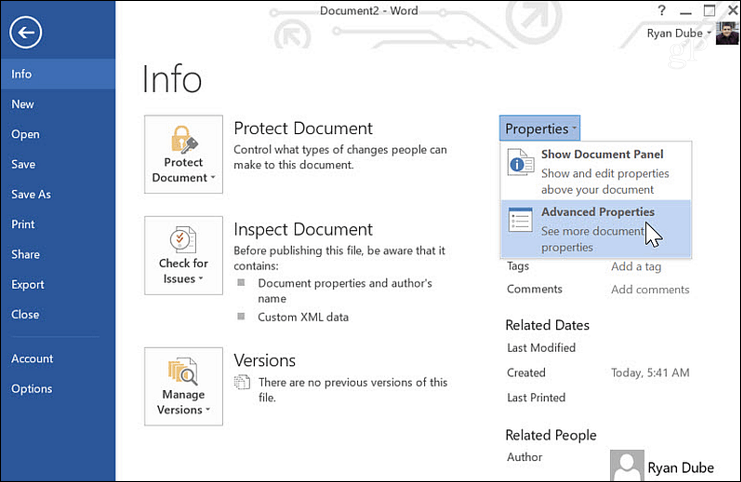
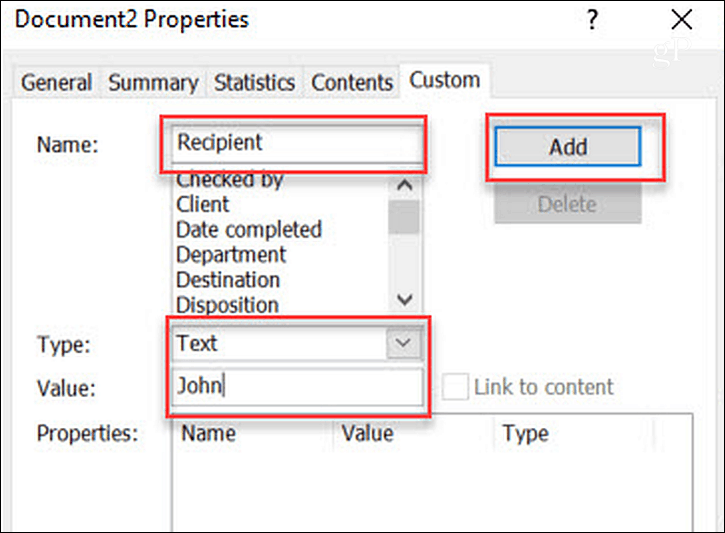
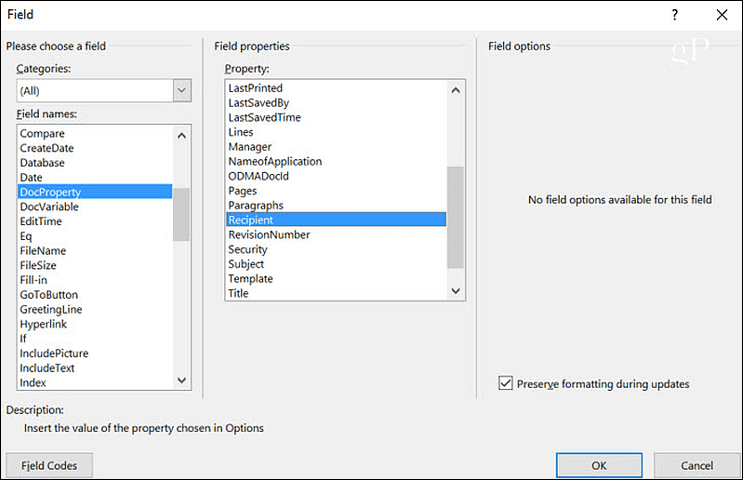
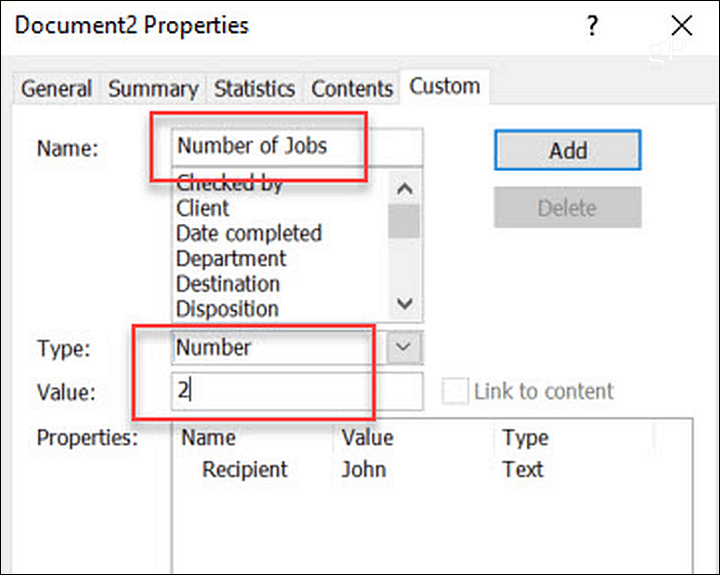
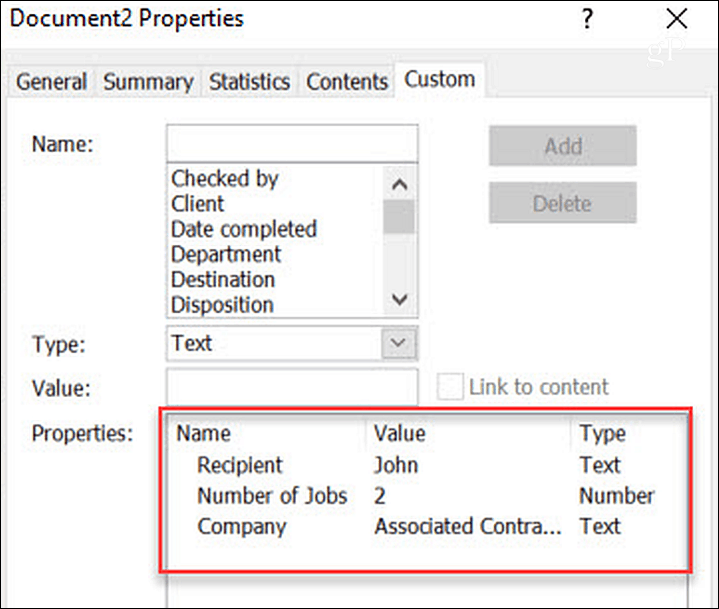




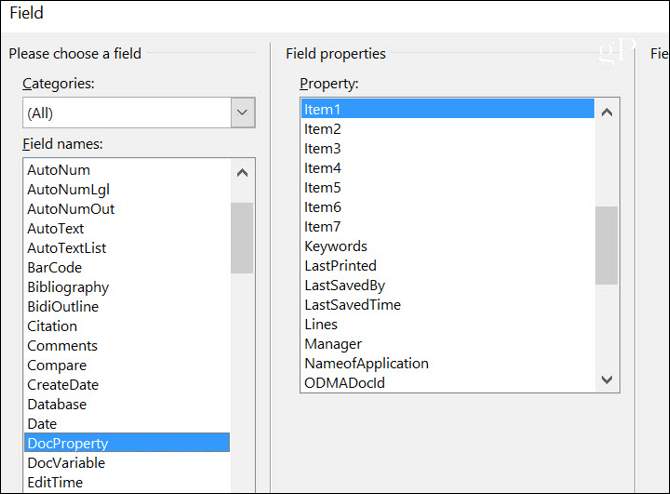
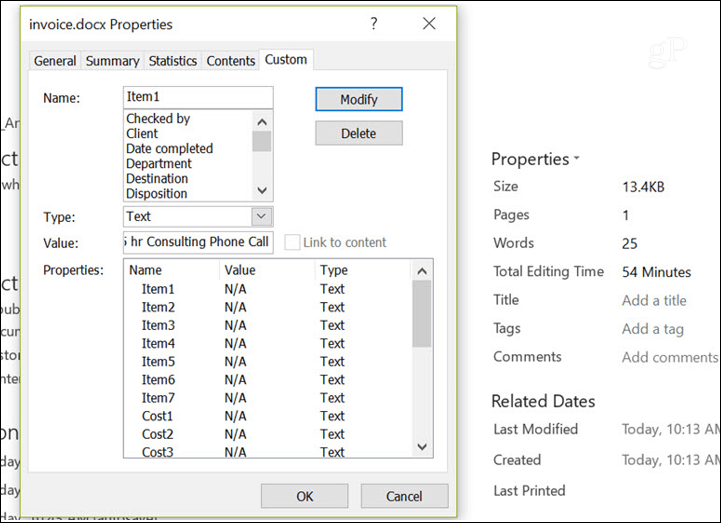

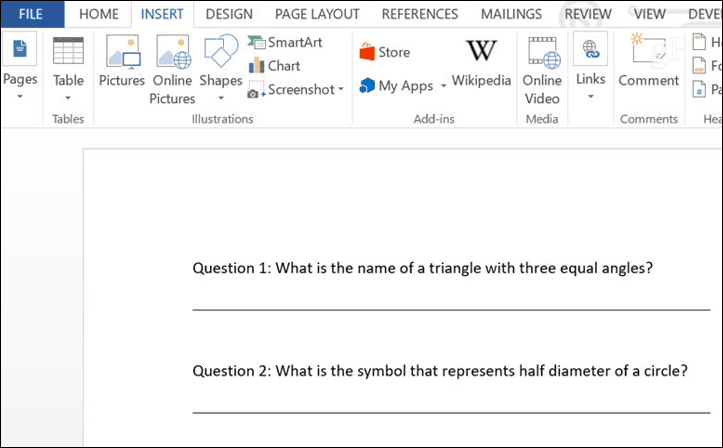
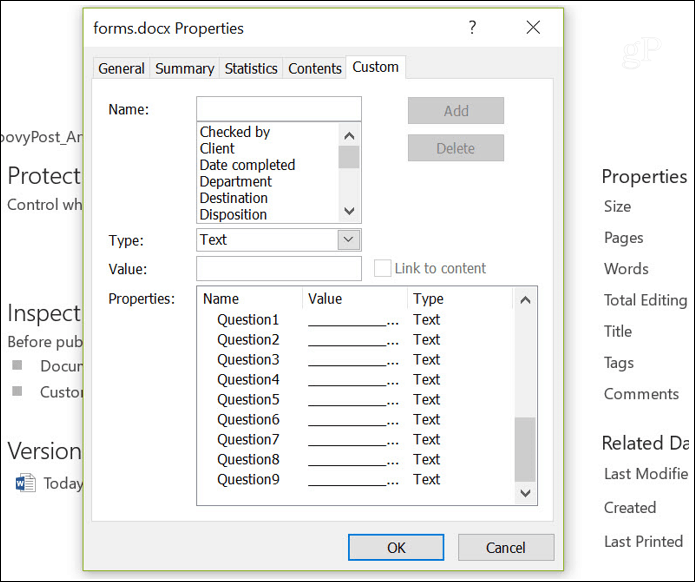








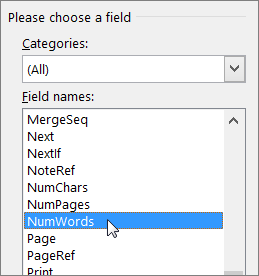
 , and then click Word Options.)
, and then click Word Options.)